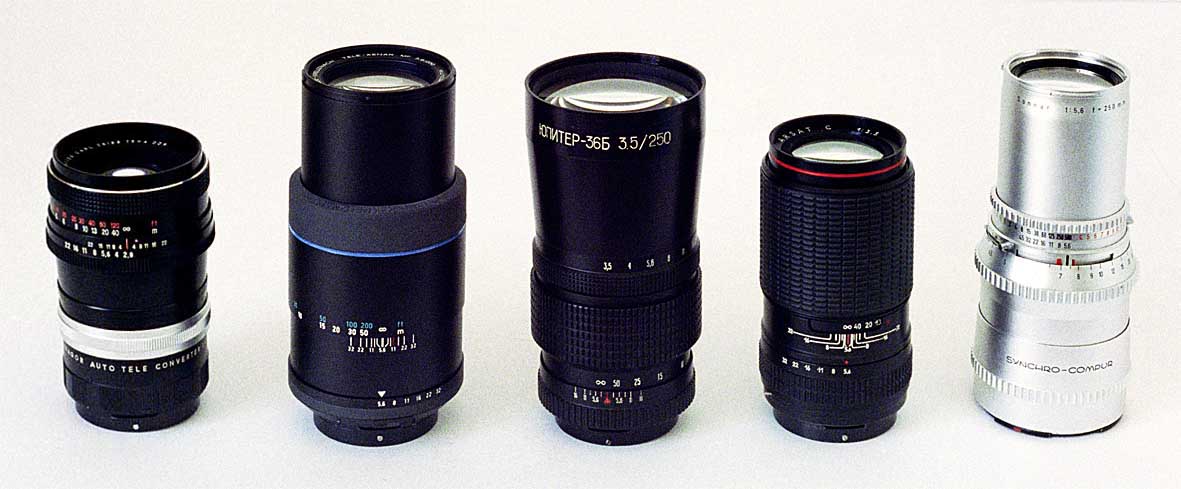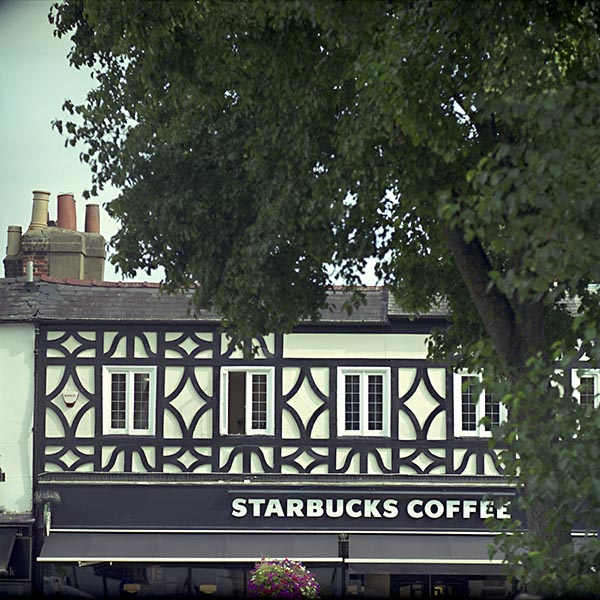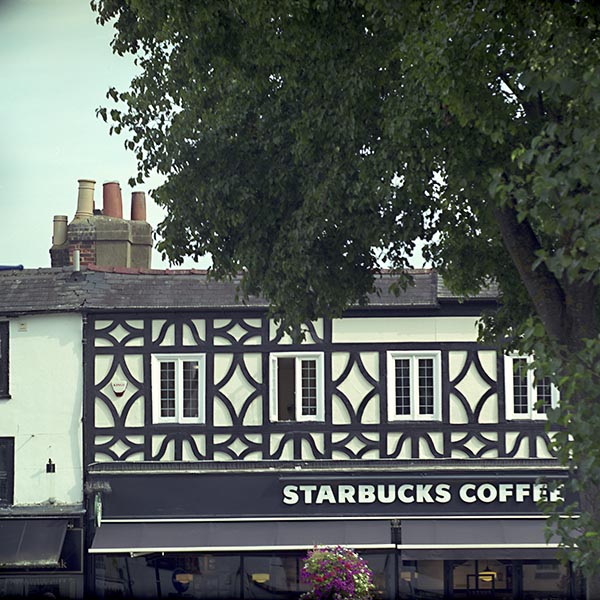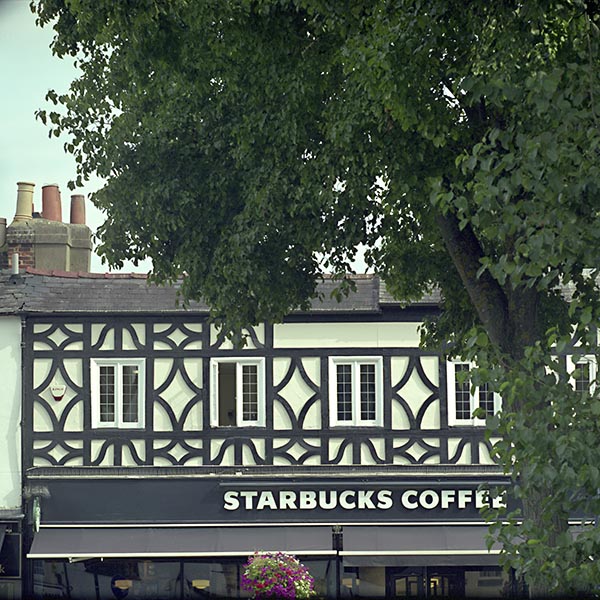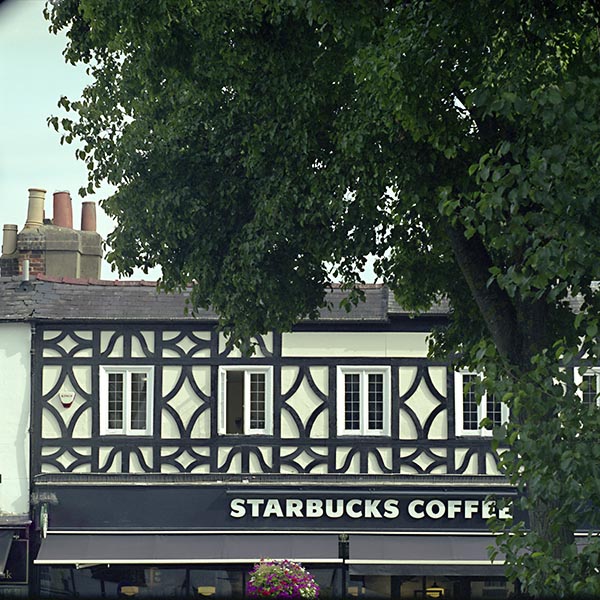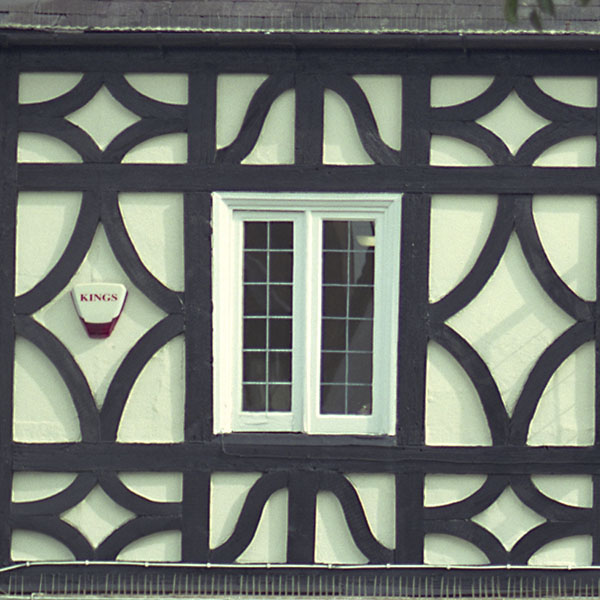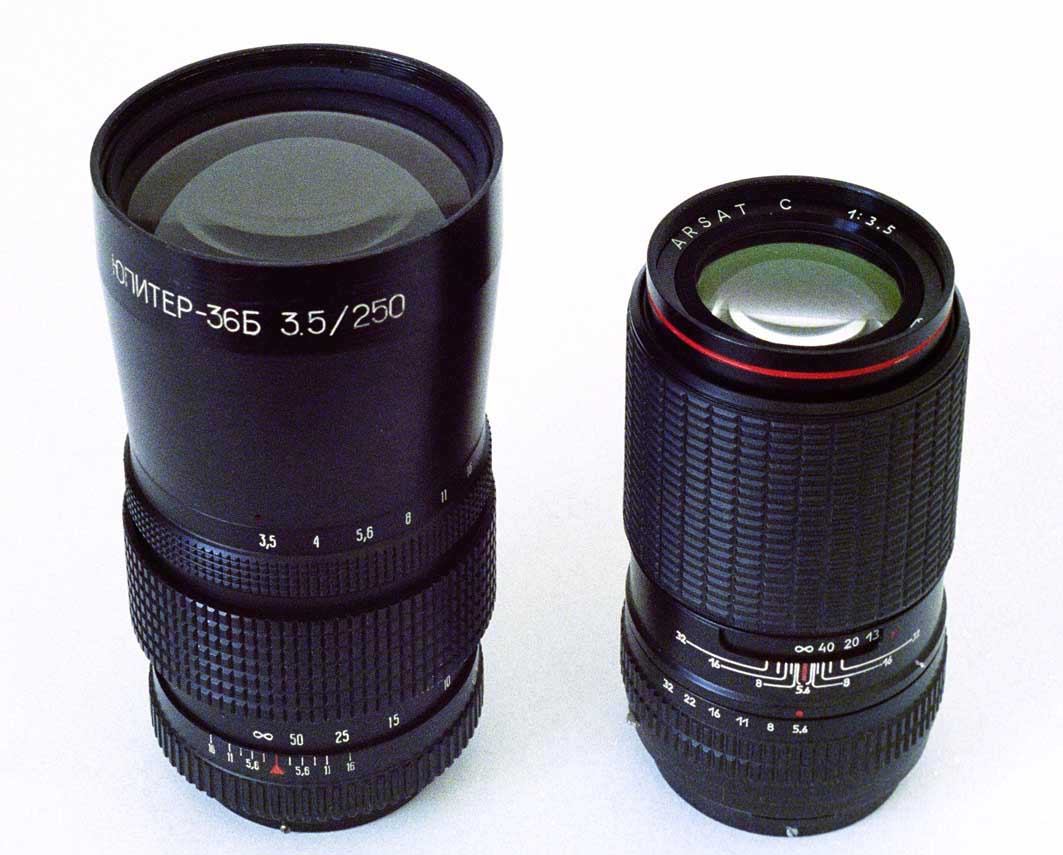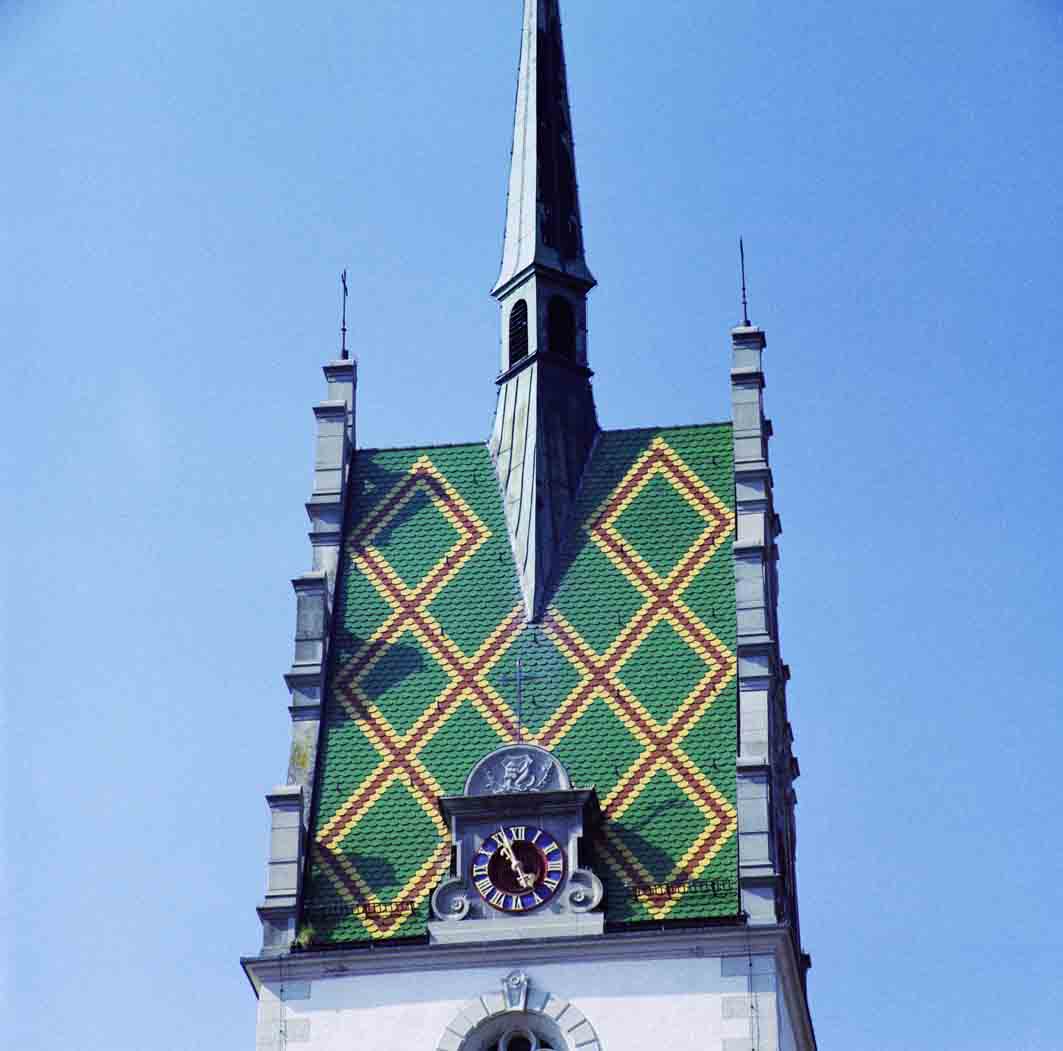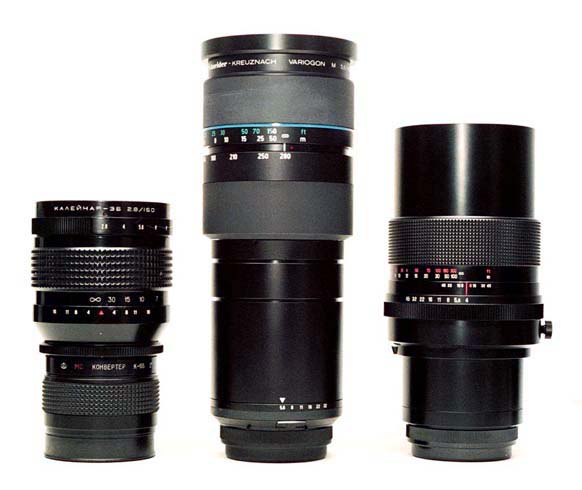|
As we use longer and longer focal length
lenses on the same subject, the area of sky in the image
diminishes, and eventually disappears. Although
correct use of the meter prevents any exposure problem,
most labs – even so-called “professional” ones – are not
quite up to this, so their integrated reading shows a
negative with less dense areas (less sky), and they
print lighter to compensate. They have done this
with the shots taken with the 300mm Carl Zeiss Jena
Sonnar, making comparisons harder. However,
in spite of this, we shall try to compare the prints.
At its maximum aperture of f/4, this lens
produces an image that is satisfactorily sharp across
the whole of the frame. However, inspection with
the loupe reveals that it is not quite as sharp as
the Schneider 250mm Tele-Xenar at f/5.6
– not really a fair comparison. At f/5.6 I would
expect this lens to match the Tele-Xenar. At f/11
it appears just as sharp as the Tele-Xenar at the same
aperture – and this was the top-performing 250mm lens in
our head-on test described above.
|
So how does the 300mm Sonnar
compare with Schneider’s 140-280mm Variogon at 280mm?
Given the results of the comparison between the Variogon
and the 250mm Tele-Xenar above, it should not surprise us
to see the same here. The Variogon is the tiniest
fraction behind the Tele-Xenar, and at f/4 the Sonnar is a
tiny fraction behind the Variogon at f/5.6.
At f/11 with the aid of the loupe I can see marginally
more detail in some parts of the image taken with the
Variogon than in the image taken with the 300mm Sonnar, but
this is probably because the lab printed the Variogon
shot darker than the Sonnar frame, resulting in some
marginal loss of detail in some highlights in the Sonnar
shot. For all practical purposes, given
equivalent printing, I would think that it would not be
possible to distinguish between the 300mm Carl Zeiss Jena
Sonnar and the 140-280mm Schneider Variogon.
You can compare the sizes of 300mm lenses
and data about them here.
150mm × 2
I also decided to compare the Arsenal
150mm Kaleinar + Arsenal 2× converter. Even
with f/2.8 set on the lens, the results are very good
indeed, in terms of both contrast and sharpness in a
large part of the central area of the image. At
f/11 the roof tiles near the top edge of the image are
much sharper, with a small fall-off in the
corners. Definitely not up to the definition of
the CZJ 300mm Sonnar, even at full aperture!,
but not far behind. This combination is definitely
very useable if you don’t have the 300mm lens, or don’t
want to carry the extra weight around with you on a
given occasion.
Another combination is the Schneider
150mm Tele-Xenar + Schneider 2× converter.
Used on its own, at maximum aperture, this lens was much
sharper than the Kaleinar, but at f/11, I could
not distinguish (even with the loupe) between the
Tele-Xenar and the Kaleinar shots. So we can
expect similar outstanding results when the Tele-Xenar
is tested with the Schneider converter, although I did
not shoot with this combination. (My car had been
parked in a no-parking zone for several hours, and the
traffic wardens and local police had shown great
understanding and patience when I explained that I could
not possibly carry all these lenses in order to
complete the tests, but I finally felt that the time had
come to pack up and go home!)
To go on to the next section, a full
review of the Kilfitt 300mm Pan-Tele Kilar,
click here.
For the results obtained with the Kilfitt
150mm Tele-Kilar used with the Kilfitt Multi-Kilar
variable converter at the 2× setting, see here.
|
|

[C302-3: Carl Zeiss Jena 300mm Sonnar at
f/11 1/125 sec]
|
